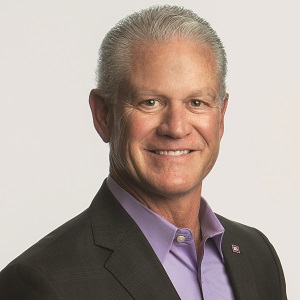
Dave Fate,
CEO,
Stonebriar Commercial Finance
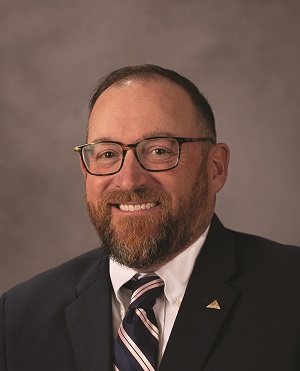
Dave Lyder,
EVP,
Ascentium Capital Group Manager, a Division of Regions Bank
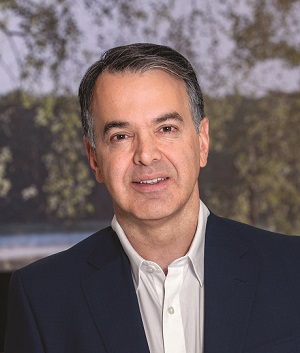
Marcio Pedroso,
President,
Volvo Financial Services
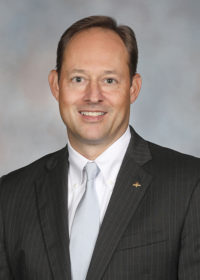
William C Perry III,
Executive Vice President & Group Head,
Regions Equipment Finance Corporation
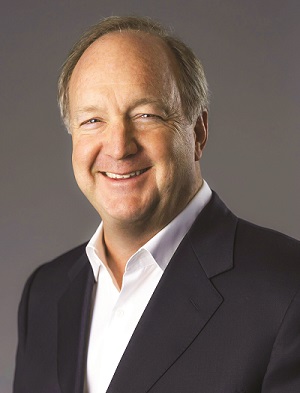
Bill Stephenson,
CEO,
PEAC Solutions
As interest rates surged and regulations tightened, many banks retreated from the equipment finance and leasing sector. This new course in economic cycles created a divergence among companies — some seizing opportunities for success, while others faced critical challenges. Amidst these fluctuations, one constant remains for Monitor 100 leaders: the resilience of our industry.
Looking at the equipment finance industry, what challenges and opportunities do you see in the market today?
DAVE FATE: 2024 should be a very good year for well capitalized independents. The biggest opportunities will be for those who can deploy meaningful capital to their customers. Those with strong capital sources will have significant leverage over those that don’t.
DAVE LYDER Like our team at Regions Equipment Finance, the higher-for-longer rate environment coupled with inflationary impacts on equipment prices has stressed pockets of the small business sector. Scale matters now more than ever.
MARCIO PEDROSO: Higher interest rates and inflation are current challenges that are impacting our customers and our industry, but other challenges include the need for everyone to be more prepared when it comes to transformation, digitalization and the use of data. This is a complex area that requires focus, new skills and investment. Yet I see these challenges also as great opportunities. Digitalization and data, if managed and utilized well, can be leveraged to provide faster and better services to customers. Specific to two of the industries we serve, transportation and construction equipment, we see big opportunities in electrification, including new business models to help our customers acquire these assets.
WILL PERRY: The economic climate continues to weigh on certain clients. But our experience at REFCO runs deep in helping clients through various economic cycles. Clients continue to remain cautious about capital expenditures, but we believe it will create growth opportunities as rates decline and clients look toward their long-term projects.
BILL STEPHENSON: Two words come to mind: regulatory compliance. The challenge is there because the steps being taken to address an expanding list of data acquisition and reporting requirements will continue to create IT or process obstacles for most companies, not to mention increased costs. In many cases, we have seen these changes can also have a negative effect on the overall customer experience. That said, solving these new challenges has also been a great catalyst for innovation. I am a strong believer that companies who can ‘crack the code’ and find new, easier ways to collect data and minimize that burden for their customers will have an advantage.
What is your take on private credit in equipment finance? Is it here to stay or a passing trend?
FATE: It is here to stay. Given how Stonebriar has evolved, I see us trending more and more into that arena as time goes by. We are closely monitoring private credit for signs that the governmental regulatory environment may become active in that space.
LYDER: We often see providers come in and out of the market either to deploy excess capital or seek yield. It remains to be seen if private credit remains in the small ticket equipment finance space.
PEDROSO: I’m not sure I would call it a passing trend; it has been growing for years. However, like many things in our industry it depends on demand, liquidity and, to a certain extent, regulations in the banking sector. I am sure that it is here to stay, but its relevance will most likely fluctuate from time to time based on the factors above.
STEPHENSON: The current market conditions are creating niches for some firms, allowing them to address certain underserved segments of the market. However, in many cases their vision is short-term, opportunistic and deal focused. Once market conditions shift again, I fear that many of these firms, who “just wanted to dip their toe in the water,” will inevitably exit.
Looking back over the last year, to what factors do you attribute your company’s success?
FATE: Stonebriar’s success is based upon a multitude of factors including disciplined originations and underwriting standards, predictable execution and a well-diversified funding strategy. For the second consecutive year, Stonebriar funded approximately $2.2 billion of new business at its highest yields to date. Increasing interest rates, a strict regulatory environment and market disruptions caused banks to reduce exposure to the equipment finance and leasing industry. Several have exited or reduced equipment finance product lines. The size and scale of the Stonebriar’s balance sheet will continue to allow us to execute larger, more sophisticated transactions ultimately leading to another very successful year.
LYDER: At Ascentium, we believe the strong balance between sales, credit and risk is the differentiator to our growth in the equipment finance space. We strategically align our sales leaders to focus on areas of opportunity to meet small-business needs in the markets we serve. Regions’ commitment to small-business lending is strong, and Ascentium is just one way the bank can leverage our work to keep small businesses growing.
PEDROSO: There are many factors to consider but, in my mind, the prime factor is the knowledge, commitment and dedication of our people across all functions. The knowledge that our teams have of our customer and dealer needs, coupled with specific product knowledge of the assets we finance, is unparalleled, and we work hard every day to deliver excellent service to all our customers. This includes a deep understanding of how business trends are changing, both for us and our customers. We continue to innovate around new models and offers that will enable our customers’ success now and into the future.
PERRY: At Regions Equipment Finance (REFCO), we take a disciplined and strategic approach to serving clients and their portfolios. We believe our growth is a testament to the relationship-based approach REFCO takes to serve our clients’ equipment needs and not merely focusing on making transactions.
STEPHENSON: Overall, we can attribute much of our growth and success to the great team of talented professionals that we have at PEAC Solutions. Additionally, I would cite our continued innovations, including the recent introduction of our new front-end portal, as well as our unrelenting focus on further simplifying and improving the experience for our customers. We have also had some great commercial wins over the past year, including a significant expansion of our relationship with Xerox FITTLE, several new signings in the construction and industrial sectors and more recently, a new exclusive program signing with Konica Minolta Business Systems for their independent dealer channel.
From your perspective, what tailwinds are helping your business in 2024?
FATE: Banks have been impacted by the macro change in the market conditions. The increased cost of capital due to significantly higher interest rates coupled with the ever-increasing regulatory burdens have
had a negative impact on their willingness to lend thus, creating additional opportunities for Stonebriar and other independents. Stonebriar has seen a surge in credit quality and volume. We don’t expect that to change in 2024.
LYDER: In 2023, many small-business owners paused purchasing new equipment or updating current equipment because of the interest rate environment. As we see rates stabilize, we see a strong pent-up demand for equipment needs and clients are turning to Ascentium for help. Because our work centers on providing business equipment lease and financing programs, clients can customize the service and solution that is unique to their small business. We believe that will continue to be a place of strength throughout 2024.
PEDROSO: In general, we have seen good market demand for trucks and construction equipment in the years following the pandemic, and this continued during 2023. That, coupled with the loyalty gained from the
strong support that we gave our customers in the early days of the pandemic, has helped us to grow our assets significantly, and we anticipate that will continue.
PERRY: We know our clients, and we know their equipment needs. That allows us to provide consultative, structural advice to help them remain flexible throughout the higher interest rate cycle. That is our strategy, and it continues to deliver opportunities to serve clients.
STEPHENSON: Despite the U.S. economic outlook and demand softening in recent months, we have continued to seize on opportunities created by some bank-held lessors curtailing their investments in certain sectors. I expect this trend to continue in 2024, particularly as we get closer to the start of the Basel III Endgame transition in 2025. That transition should provide independent lessors with further opportunities for growth because some banks will be forced to redirect capital allocations toward their core business lines and away from other ventures, such as equipment finance.
On the flip side, what headwinds have created challenges for your business over the last year?
FATE: The two biggest headwinds that initially come to my mind are that the cost of capital has increased for everyone including Stonebriar. Couple this with private credit that could become an increasing presence in the ELFA industry. Beginning in April 2022, Stonebriar changed the way we index our products to more align with the short end of the curve or rates that the Fed controls. We actively manage our NIM and returns at Stonebriar.
LYDER: Small business owners continue to face a tightening labor market, inflation and political uncertainty. Liquidity and a strong balance sheet continue to be top priorities for them. At Regions, helping clients with a cash centric view of their business is a top priority. The bank consistently looks for ways to meet the cash management needs of clients and provide options that can simplify operations and allow businesses to focus more on revenue-producing activities. As clients see a real-time view of their balance sheet, it provides greater confidence to address the areas of the business, like equipment and technology, that support long-term growth.
PEDROSO: The fight against inflation has been challenging, and interest rates have remained higher, and higher for a longer period of time, than perhaps people expected. Both higher rates and inflation have impacted, and will continue to impact, the costs incurred by many businesses in our sector, and this may lead to more customers failing.
PERRY: The current interest rate environment has delayed growth and reinvestment in some sectors, particularly our tax-exempt strategy (i.e., government, local municipal, healthcare, 501c3).
STEPHENSON: As we navigate through 2024, I think our entire industry will encounter some of the same ‘bumps in the road’ that we felt in the second half of 2023, which has included an uptick in delinquencies and defaults. Despite the U.S. economy adding jobs in recent months, job market growth is slowing compared to last year and most business owners continue to wrestle with inflation, which is driving higher input and labor costs and putting a squeeze on margins. This has translated to lower confidence in many sectors and a tightening of belts, but I remain hopeful that the Fed rate cuts projected for later this year will provide some relief.
How is your company approaching innovation today?
FATE: We leverage multiple data aggregation tools to support efforts from prospecting, originations, underwriting, legal and asset management. We have recently moved into new office space that is equipped with the latest communications technology, allowing us to more easily connect with a wide variety of constituents.
LYDER: Like REFCO, we are strategically deploying technology resources and investing in innovation where the largest impacts lie. Coupled with the connectivity within the entire Regions organization, we are leveraging innovation to position Ascentium for long-term growth.
PEDROSO: We are working hard to support innovation, both in the assets that we are financing through connectivity and data, as well as overhauling our customer-facing and operational technology. We are investing in customer portals to provide easier access to information, while continuing to develop data-driven services in parts and service financing and insurance. Last but not at all least, we currently provide, and are developing further, financial solutions for the electrification of heavy- and light-duty trucks and construction equipment. This includes subscription and usage-based business models that help provide peace of mind for customers.
PERRY: REFCO continually evaluates our process and workstreams, and we have implemented various technologies that help our team focus more on the client and the client experience.
STEPHENSON: We recently introduced a new state of the art front-end platform, as well as API solutions that aid further integration with our vendor partners.
Any final thoughts?
FATE: After nine years, Stonebriar is very well positioned for continued and profitable growth. The right side of our balance sheet is strong and flexible, thus allowing us to deploy a wide range of capital for our customers’ needs.
PEDROSO: Like most industries, we are in a period of rapid change, with technology driven by connectivity and data moving faster than ever. This places a lot of pressure on our industry and our customers to change and adapt, but it also provides an opportunity for new ways of working and new business models. We will have many new tools and techniques at our disposal, but, in the end, it will depend on people to implement, calibrate and deliver them.
STEPHENSON: Over the past 40 years, the only constant has been “change,” whether you look at the regulatory environment, the accounting / tax rules or the rapidly-evolving preferences of customers. The companies in our industry that can foresee these changes, and take steps to adapt through innovation, investment, and most importantly, staying close to the needs of their customers, should realize tremendous success for decades to come. •
No categories available
No tags available